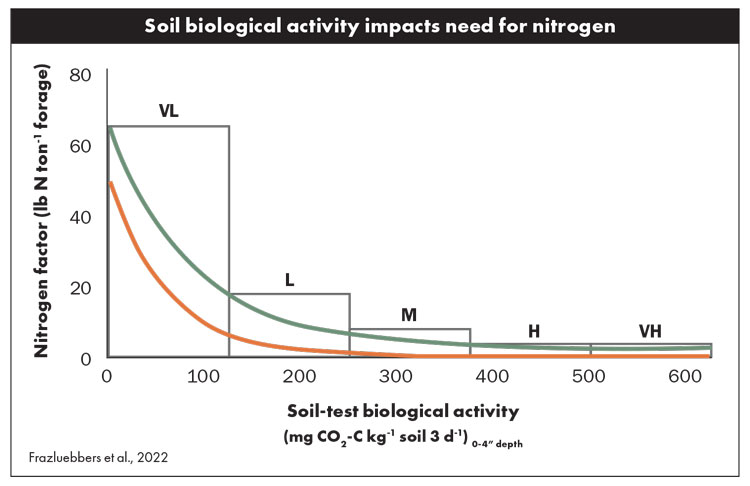Soil health’s biological basis |
| By Alan Franzluebbers |
|
|
|
The author is a soil scientist with the USDA Agricultural Research Service in Raleigh, N.C. Can soil really be considered healthy or unhealthy? Wouldn’t that require soil to be a living entity? How could this be if soil is made up of sand, silt, and clay particles and simply holds water and air as a medium for anchoring plants to the earth? Well, soil could be considered unhealthy if it no longer performs the essential functions of absorbing water, filtering water to give us clean groundwater, providing nutrients to allow plants to thrive, or decomposing organic materials applied to the land. Indeed, soil can be considered healthy only if it can perform these essential functions that we expect from it. How we manage soil, therefore, allows us personal control for the health of our land. This is a great responsibility that can be rewarding for us and our neighbors. Measured breathing When we consider soil a living entity, we can understand that it breathes much like we do. Although soil may be truly living only in the bacteria, fungi, and small animals that reside within the mineral matrix, it acts as a living entity through the multiple functions it performs for the benefit of the earth’s inhabitants. Therefore, the more soil breathes, the more it needs to be fed. The more soil is fed, the more work it can do. We can measure this breathing through soil respiration, which is the exhaling of carbon dioxide (CO2) from the soil surface. To standardize this measurement as a soil testing approach, soil is collected, dried, and then rewetted to optimize the balance of water and air for soil microorganisms. Placing the moist soil in a chamber with constant temperature is important, as cold soil doesn’t respire as much as warm soil if all other factors are the same. After only a few days, the amount of CO2 respired can tell us how biologically active a soil sample might be. Some soils are more biologically active than others. Those samples that are more biologically active can be considered well-fed, highly functioning soils. These soils might be considered healthier than those having little biological activity. When a soil has very low biological activity, can it really be considered healthy enough to support a robust plant community that provides us sufficient food, fiber, and ecosystem services? Standard measures Because of the sensitivity of soil biological activity to temperature, moisture, and length of time, a standard laboratory approach is needed. With years of experience as a foundational basis, soil-test biological activity (STBA) has become the standard to which other laboratory protocols should be compared. These technical details become important when making recommendations for nutrient management or interpreting the effects of soil management on other ecosystem services. Soil-test biological activity was recently categorized into a gradient of low and high levels to make nitrogen fertilizer recommendations (see figure above; https://bit.ly/HFG-Nrec).  Soil biological activity impacts need for nitrogen
This gradient of STBA allows producers to make immediate decisions on nitrogen application rate, as well as providing a useful indicator to assess long-term changes in soil health condition when sampled periodically. Since the inherent ability of soil to provide nitrogen to growing plants is a function of a small portion of soil organic matter turnover, STBA, expresses this vital soil process effectively. Grass enhancement Soil-test biological activity has been shown to improve with pasture age. This is due to the accumulation of organic matter near the soil surface with input of roots and their partial decomposition over time. Return of plant residues or livestock feces also feeds soil microorganisms. Type of soil and environmental conditions can also affect STBA. Therefore, different types of management can either increase or decrease STBA, depending on landscape setting. Evidence is becoming clear that routine soil testing for inorganic nutrients may need to be supplemented with soil biological testing. This article appeared in the March 2023 issue of Hay & Forage Grower on page 9. Not a subscriber? Click to get the print magazine. |
